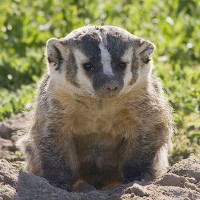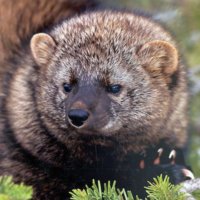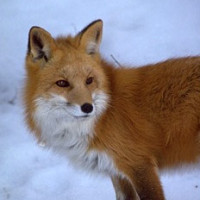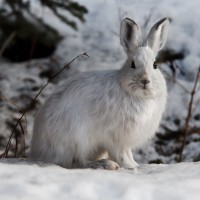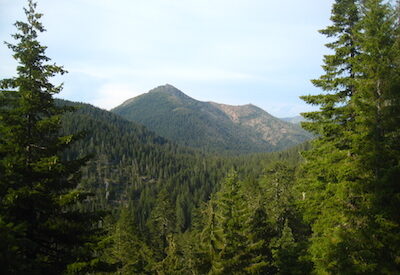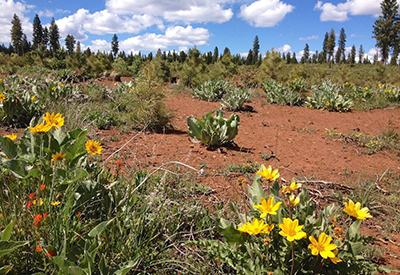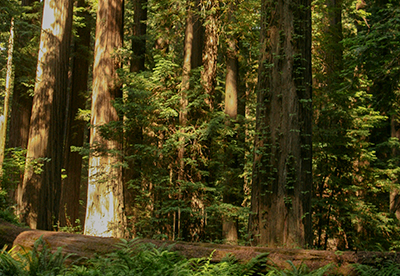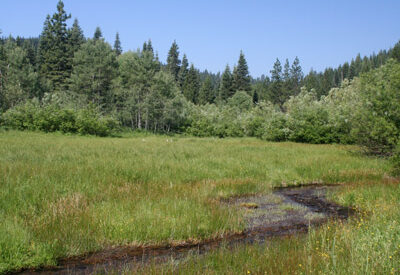Aspen Meadow Habitat
Aspen groves are a haven for biological diversity despite occupying a relatively small proportion of the evergreen forested landscapes in which they reside. Although known as quaking aspen because their leaves flutter in the slightest wind, they may be quaking because aspen stands have experienced a long, slow decline.
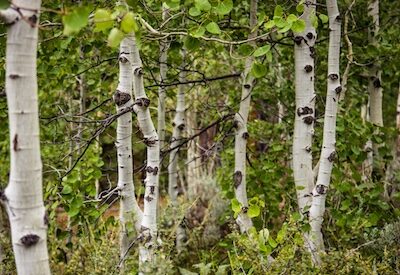
QUICK FACTS
- Aspen are the most widespread tree species in North America
- Aspen have experienced a significant decline in the western U.S., including California
- Aspen provide important habitat for wildlife, especially birds that nest in the cavities they drill in aspen trunks
About Aspen Forest Habitat
Stands of aspen are typically found on upland montane sites intermixed with conifer-dominated forests such as Douglas fir. In California, aspen are often associated with wet meadows, riparian, and seasonally wet areas.
Aspen stands are often found adjacent to meadows, with a shrubby transition in between the two habitat types. Such shrubs, as well as those in the understory beneath aspen, provide important nesting cover for several species. Species that use it include ungulate grazers like mule deer. Aspen stands are associated with higher bird diversity and abundance, owing in part to the high levels of insects found in more moist habitats, such as aspen. Aspen trees are also easily drilled by excavating bird species and thus play host to numerous cavity-nesting bird species, including chickadees, bluebirds, sapsuckers, and downy woodpeckers.
In California, efforts have been underway for several years to determine just where all of the aspen stands are, with hopes of stemming and ultimately reversing the decline they have experienced since the 19th Century.
Photos: Image #1 by Mike Baird, Image #2 by Bodey Marcoccia
Why Conserve this Habitat?
In California and other parts of the western U.S., aspen groves have experienced major declines over the past two centuries. A variety of causes have contributed to their decreasing presence on the landscape, including intensive grazing by wild and domestic ungulates, conifer encroachment, conversion to other cover types (often via logging), and altered hydrologic conditions, though fire suppression during the past century has been blamed most widely. Drought conditions have also had negative impacts on aspen in recent years, raising concerns that climate changes in the future will further threaten this forest type.
Today, both public and private landowners are concentrating their efforts (sometimes working together) to restore aspen on their lands. These efforts include removing conifer trees that have been encroaching into aspen stands, limiting grazing by installing fences, restoring hydrological conditions that existed previously, and returning fire to the landscape using prescribed burns.
How We Conserve this Habitat
We work with landowners to restore and maintain aspen stands on their property, often in conjunction with wet meadows that are also in need of restoration. When developing conservation easements with landowners, these areas will often be designated as special management zones where future activities must benefit aspen habitat. On a more regional basis, we promote efforts to secure California’s water supply, especially from sources originating in the Klamath-Cascade Region.
Explore What We Do

Conserve Forests
We work with landowners to conserve well-managed forests, building resilient landscapes.
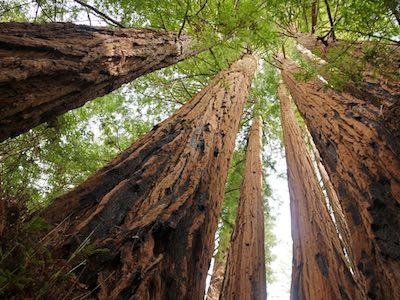
Advance Climate Solutions
We protect, restore, and sustain forests to mitigate climate change and help species adapt.
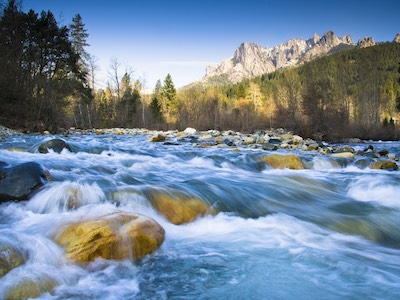
Protect Water Sources
We ensure water security by protecting forests that provide life-sustaining water to millions.
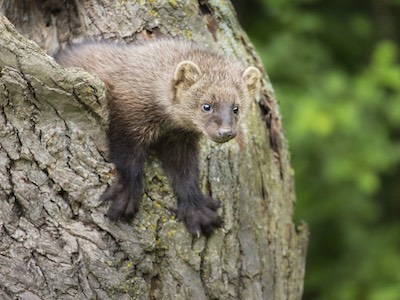
Save Wildlife Habitat
We conserve and restore habitat to protect the animals and plants that depend on forests.

